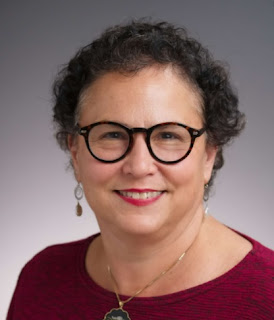From the 10/30/2020 newsletter
Perspective
Advocating for Safe Voting in Milwaukee – It’s
Tough Sledding Out There
Christopher S. Davis, MD MPH
Dr. Davis reflects on some of the important
lessons and frustrations as MCW’s Save Voting Taskforce pushed to empower
voters and educate the community in safe voting practices during the pandemic …
The publication of this week’s Transformational
Times heralds an opportunity for me to pen a reflection on the efforts of
MCW’s Safe Voting Taskforce which I co-chair with Dr. Megan Schultz. Mostly a
medical student- and resident-led endeavor, our efforts indeed generated some
meaningful successes; however, our victories and defeats were, at the same
time, both enlightening and infuriating. If we could have had our cake and eaten
it too, we would have actively registered hospital and clinic patients, provided
the entire community with safe voting information, and created a highly visible
media messaging campaign. However, largely due to the politicization of voter
registration (and even mask-wearing--really?), we couldn’t bring home
the gold. Nonetheless, I believe that we will still find ourselves on the medal
stand, if only for dutifully fulfilling our civic responsibilities of promoting
health and voting.
Our Successes
As Dr. Kalet underscores in her Director’s
Corner this week, those of us in healthcare must get our houses in order by
casting ballots. To that end, we worked diligently with MCW’s deans, center directors,
chairs, and the Office of Graduate Medical Education to emphasize both the
importance of voting and MCW’s support for these efforts.
In an event hosted by the Kern Institute,
Alister Martin (from the national VoteER
campaign), educated us and fielded questions about engaging hospital leadership
to support patient voter registration. As was discussed by Megan Quamme (the
engine of the Safe Voting Taskforce) in a recent Transformational Times essay,
this effort led to direct patient engagement in both Children’s and Froedtert’s
Emergency Departments. Our student-led efforts even extended to Wausau, where
Hayden Swartz (MS-3) encouraged North Central Health Care and Ascension’s local
hospital systems to adapt the VoteER model to engage their patients to vote and
vote safely.
Concurrently, our Safe Voting Taskforce sought
to engage a much broader audience. In order to avoid any appearance of “taking
sides” in the process, MCW’s Office of Government and Community Relations introduced
us to Eric Ostermann and Jaime Michael at Badger Bay Management Company. In
order to bypass partisanship, Mr. Ostermann suggested we reach out to the
Wisconsin Public Health Association (WPHA) to take the lead for a statewide
coalition of major health-related groups. WPHA’s board quickly voted in favor
of this and on October 8, we held the kick off of “Vote Safe
Wisconsin 2020.” Keynoted by Dr. Susan Polan
(Associate Executive Director, Public Affairs and Advocacy, American Public
Health Association), the event helped secure pledges from numerous
organizations in Wisconsin to support our efforts of ensuring that the public
had the information it needed to vote safely. In addition to WPHA, the
Wisconsin Medical Society, the Wisconsin Chapter of the American College of
Emergency Physicians, and United Way of Wisconsin were engaged. By directly
reaching at least 15,000 professionals across Wisconsin, MCW and WPHA has led a
public health campaign to assure Wisconsin’s citizens that they can vote and
vote safely despite the surge in COVID-19 cases.
Lastly, MCW and the Kern Institute have
continued to actively engage with our partners from MaskUpMKE
who launched MaskUp2Vote.
This work combines the long-standing public health message of MaskUpMKE with
information that voters might find useful in terms of where in Milwaukee to
find free masks and the basics of voting safely during a pandemic. MaskUp2Vote
also generated an animated public
service announcement which features Bango (the mascot of
the Milwaukee Bucks) and highlights the ongoing civic engagement and public
support from the Milwaukee Bucks organization.
Our Failures
I am constantly reminded that the work of
community engagement and uplifting our patients can be a slow and arduous task.
Sometimes, the hurdles appear too numerous or too high. Other times, the
resources are too scarce, the time in a day too short, and the willingness of others
to do the morally obvious thing too non-existent. For these ailments, I wish I
could offer a cure that wasn’t solely based on dogged persistence. Unfortunately,
this is the stark reality, particularly in a time when our elected officials have
left us in – what the editorial board of the New England Journal of Medicine
calls – a “leadership
vacuum.” There are now nearly 230,000 deaths from
COVID-19 with no end in sight.
In Milwaukee County, the key pandemic safety
indicators have rapidly changed from green to yellow to red while, at the same
time, homicides in 2020 have surpassed the previous record of 174 set in 1993, and
are projected
to reach 220 by the end of the year. Structural racism is rampant, and, as I mentioned
previously, the infant mortality rate in Milwaukee is among the worst in the
nation. And as if that is not enough, MCW has lost another medical student –
one of our immediate family. We can’t even protect ourselves, and if this
doesn’t give us all pause and insight into our failures, it is entirely unclear
to me what will.
We clearly need a curriculum and culture dedicated
to medical student and clinician well-being, public health, advocacy,
legislation, and community engagement so we can train tomorrow’s doctors to
work within these spheres and remain healthy while doing so.
Pertaining
to MCW’s Safe Voting Taskforce, I believe we fell short in three main ways.
- · First, we hit logistical roadblocks at our own institutions. We could not achieve a plan at Froedtert Hospital (and to a lesser extent at Children’s) to actively approach patients to register to vote, cast their ballots, and do so safely. Much of the allowable activities were mostly relegated to signage restricted to the Emergency Department, whereas other hospital systems across the country begin voter registration activities during registration and continue the conversations during the patient-provider interactions.
- · Second, we never arrived at a single local, regional, or statewide governmental partner that would embrace concise guidelines for a successful and safe election cycle. There were too many cooks in the kitchen and too many distracting partisan agendas. Indeed, attempts to engage with many elected officials or groups, such as VoteSafe Wisconsin, went unanswered. It quickly became clear that pushing for access to voting and safety protocols during a raging pandemic was not a priority for some people.
- · Third, we never achieved a widespread media coverage or public service announcement campaign. I strongly believe that this and other medical student/resident activities were undercut when the Milwaukee Election Commission, fearing a lawsuit, ruled out using the Fiserv Forum and Miller Park for voter registration/balloting sites.
There
should not have existed the need for us, as a grassroots group at a medical school, to take
on the task of widespread and concise public health messaging about voter safety
and empowerment. Yet, as the pandemic rages on and in the midst of a leadership
vacuum, we did what we could. We are proud of our efforts, have learned from
them, and will continue to work tirelessly with this growing knowledge for the
betterment of those in our communities.
Christopher Davis, MD MPH is an Assistant Professor of Surgery (Trauma and Acute Care Surgery). He is a faculty member of the Community and Institutional Engagement Pillar of the Robert D. and Patricia E. Kern Institute for the Transformation of Medical Education.










